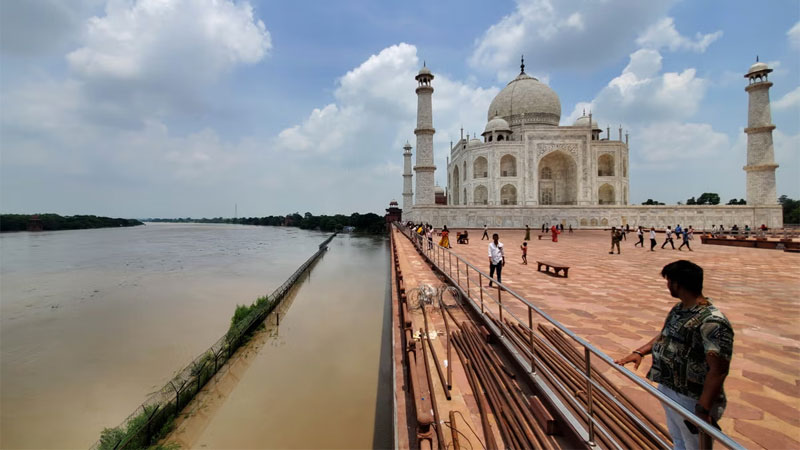|
Extreme flooding in northern India has seen water make it all the way to the walls of the Taj Mahal - the first time such an occurrence has happened in 45 years

Tom Anstey | Planet Attractions | 19 Jul 2023

 The Taj Mahal is one of the world’s most famous monuments The Taj Mahal is one of the world’s most famous monuments
Floods that have been devastating northern India have reached the walls of one of the seven wonders of the world, with the iconic Taj Mahal under threat from rising water for the first time in nearly five decades.
Built in the 17th century, the Taj Mahal is one of India’s most-visited tourist sites, with around eight million people coming to see the Unesco World Heritage Site annually.
This week, floodwater from the Yamuna River made it to the walls of the Taj Mahal, while a garden behind the building was completely submerged by the floodwaters. The Archaeological Survey of India (ASI), which maintains the heritage site, said the building itself is not under threat at the moment.
“The Taj Mahal was developed in such a way that water cannot enter the main mausoleum even during high floods,” said Prince Vajpayee, conservation assistant at ASI. “The last time the Yamuna river touched the back wall of the Taj Mahal was during high floods in 1978.”
The 1978 floods saw water make it into the monument’s basement, which led to the ASI removing wooden doors through which the water entered, while also erecting walls at the entrance from the Basai and Dussehra ghats – the two embankments that sit next to the monument.
The Yamuna, which is a tributary flowing off of the Ganges, has reached its highest level on record, leading to mass evacuations and a number of deaths.
While floods occur regularly in the area during India’s monsoon season, climate change is increasing both their severity and frequency. Experts have warned that such an occurrence could happen regularly as extreme weather events increase in number. During the mass flooding, nearly half of the Kaziranga National Park, home to a number of rare animals, was also up to waist height in water.
Heritage
|
|






Hole in One: How Holovis is changing the game with 360Golf
|